Abstract
Examination of 15,844 clinical specimens submitted over 12 years (1973 to 1985) to the anaerobic microbiology laboratories in two military hospitals demonstrated the recovery of anaerobic bacteria in 4,458 (28.1%) specimens. The specimens yielded 6,557 anaerobic isolates (1.47 isolates per specimen). Bacteroides spp. accounted for 43% of all isolates; anaerobic gram-positive cocci, 26%; Clostridium spp., 7%; and Fusobacterium spp., 4%. Bacteroides spp. predominated in abscesses, obstetrical and gynecological (OBG) infections, abdominal infections, cysts, wounds, and tumors. Members of the Bacteroides fragilis group accounted for 44% of all Bacteroides spp., and of them, B. fragilis was mostly isolated in abscesses, wounds, abdomen, and blood. Pigmented Bacteroides spp. accounted for 21% of all Bacteroides sp. isolates and were mostly isolated in sinus, eye, chest, bone, and ear infections. Bacteroides melaninogenicus accounted for 42% of this group's isolates. Bacteroides bivius accounted for 9% of Bacteroides spp., and most isolates were found in OBG infections. Anaerobic gram-positive cocci were mostly isolated in OBG infections, abscesses, and wounds. The predominant anaerobic gram-positive cocci were Peptostreptococcus magnus (18%), Peptostreptococcus asaccharolyticus (17%), Peptostreptococcus anaerobius (16%), and Peptostreptococcus prevotii (13%). Clostridium spp. were mostly isolated from wounds, abscesses, abdominal infections, and blood. The predominant strain was Clostridium perfringens (48%). Fusobacterium spp. were recovered in abscesses and abdominal and OBG infections. The predominant isolate was Fusobacterium nucleatum (47%). These data illustrate the relative frequency of the different anaerobic bacteria in a variety of infections and demonstrate the predominance of certain isolates at different sites.
Full text
PDF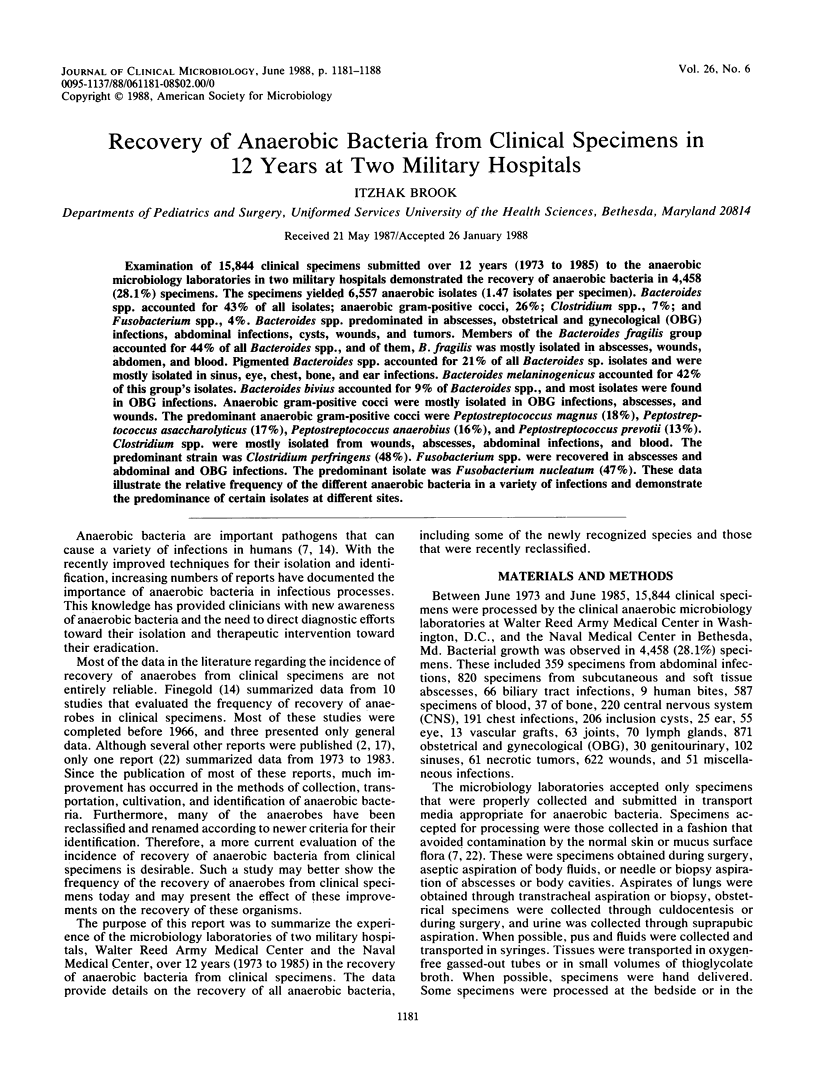
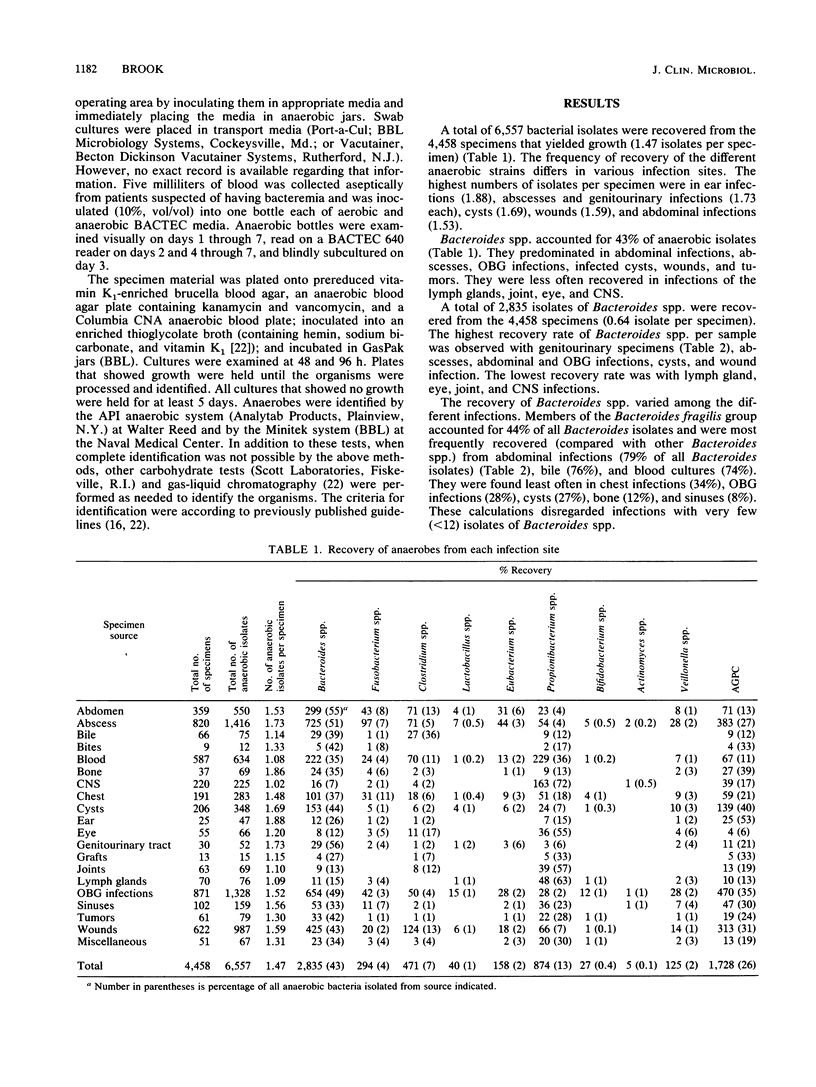
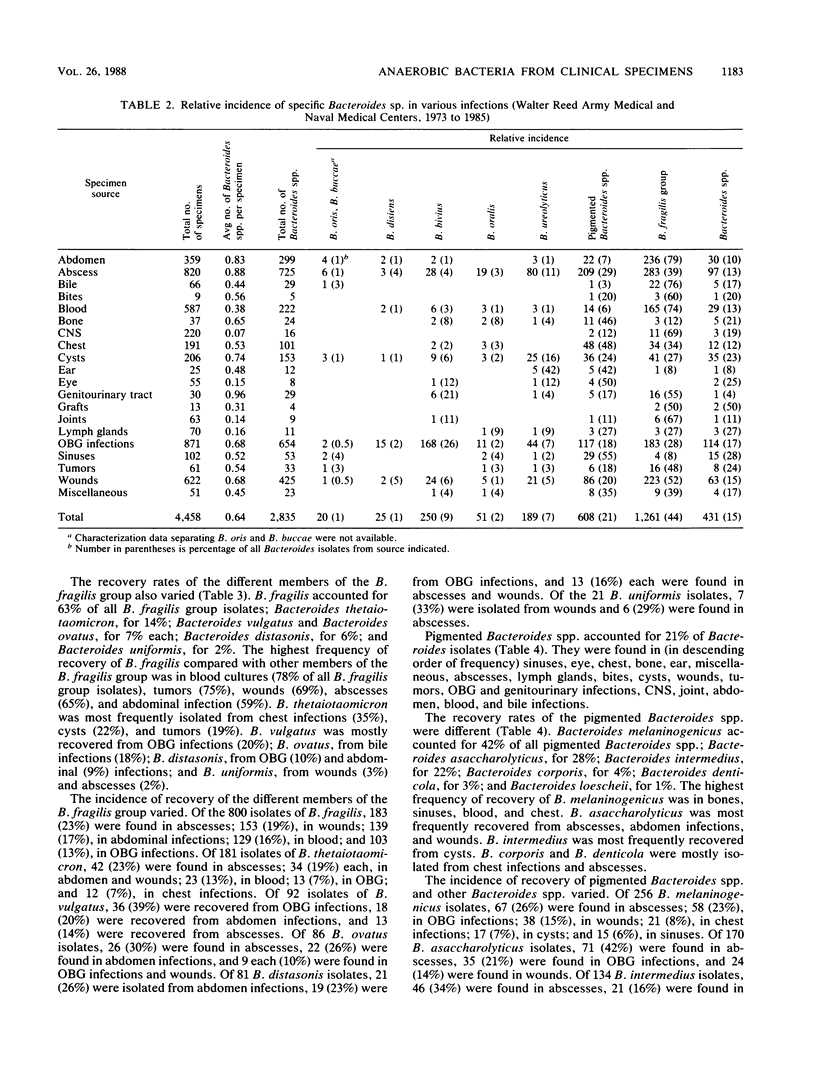
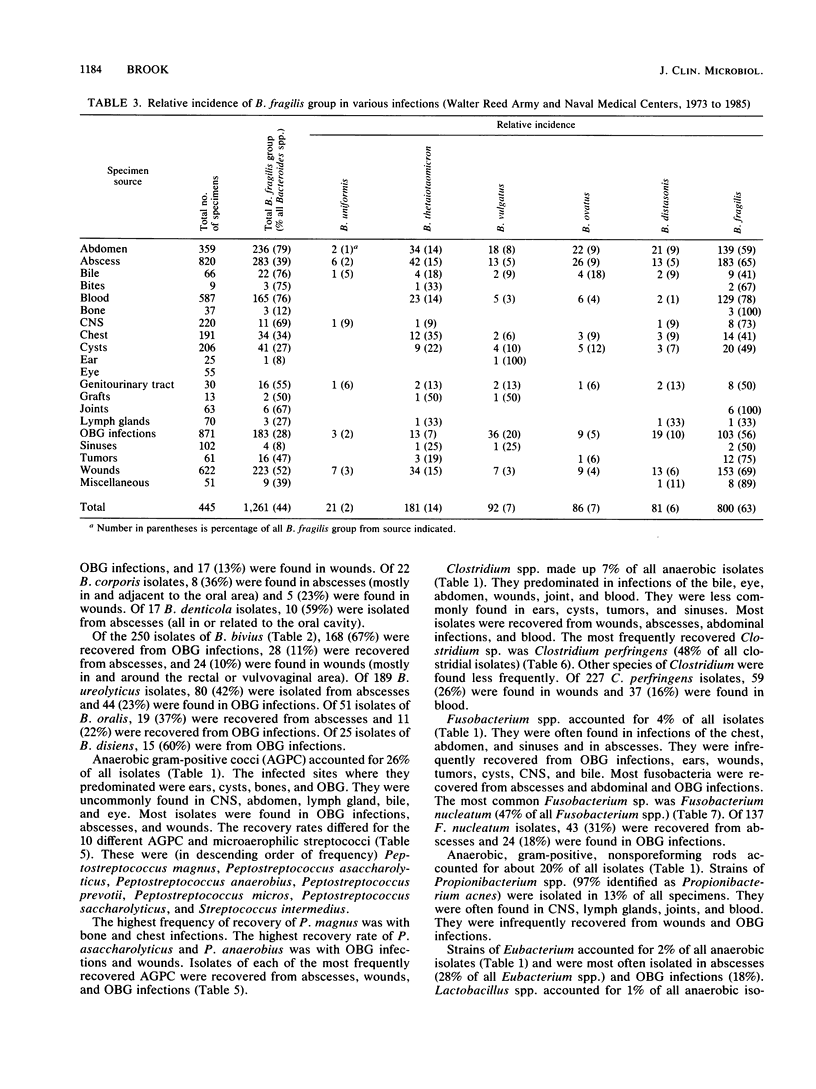
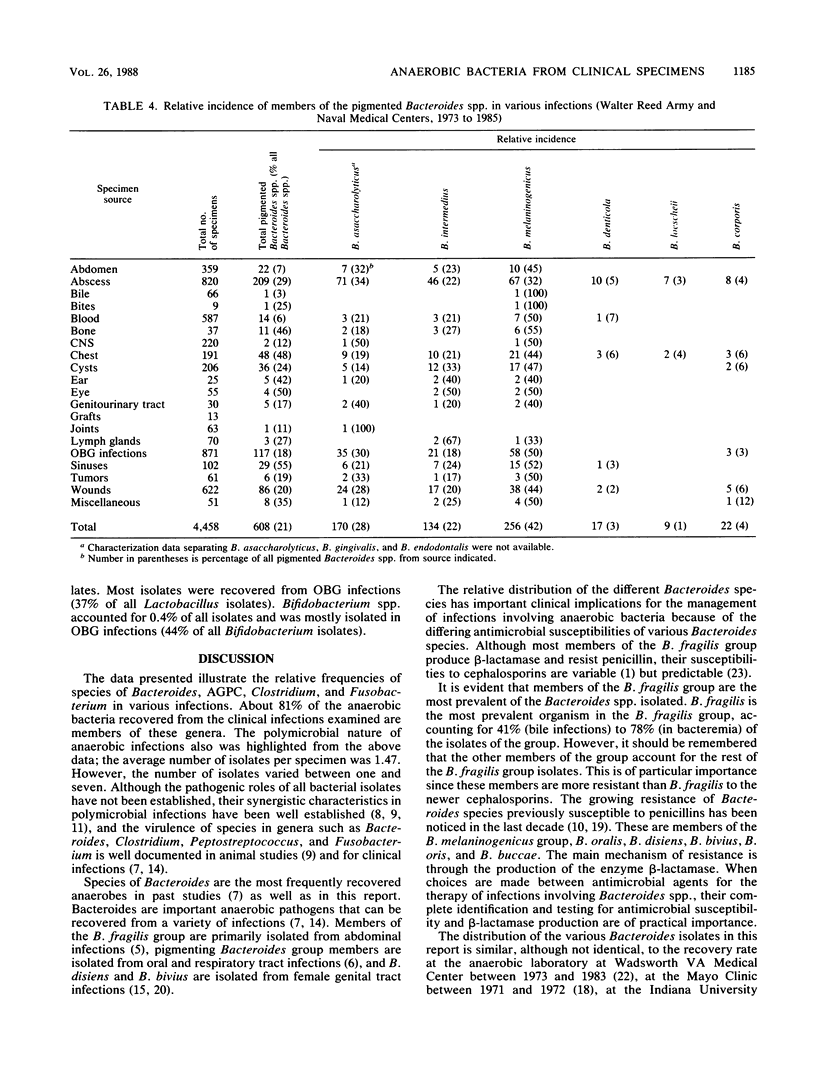
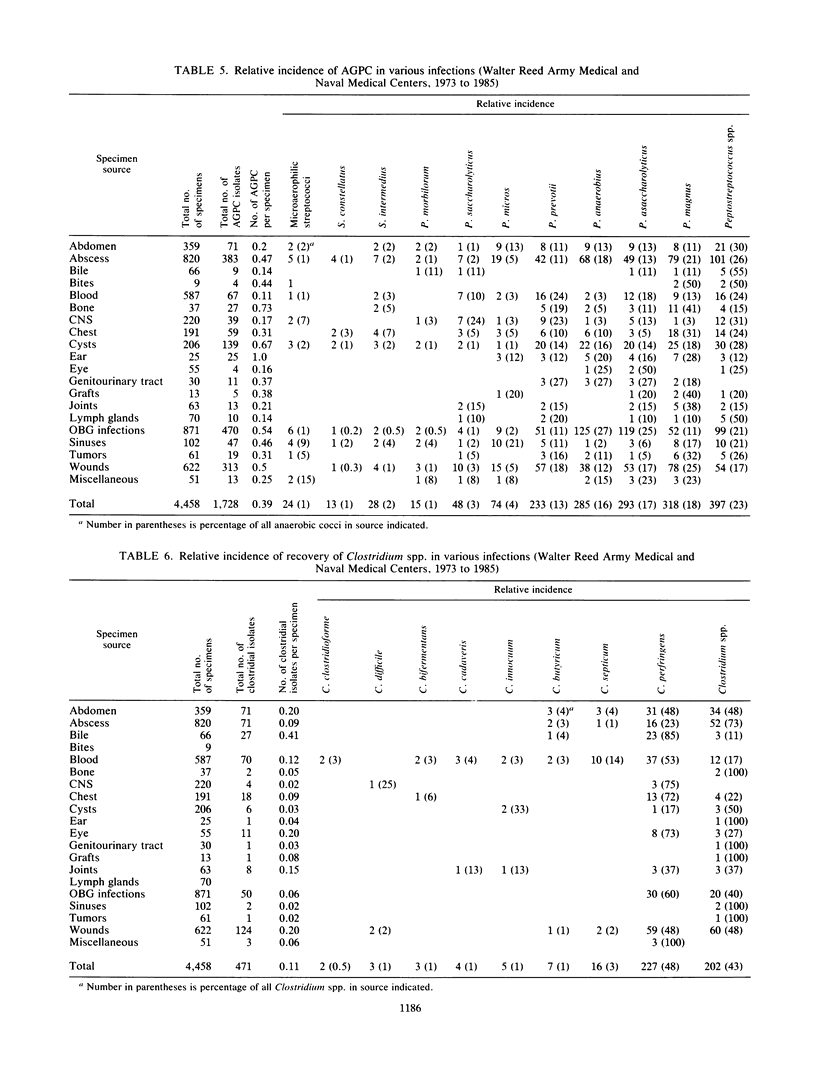
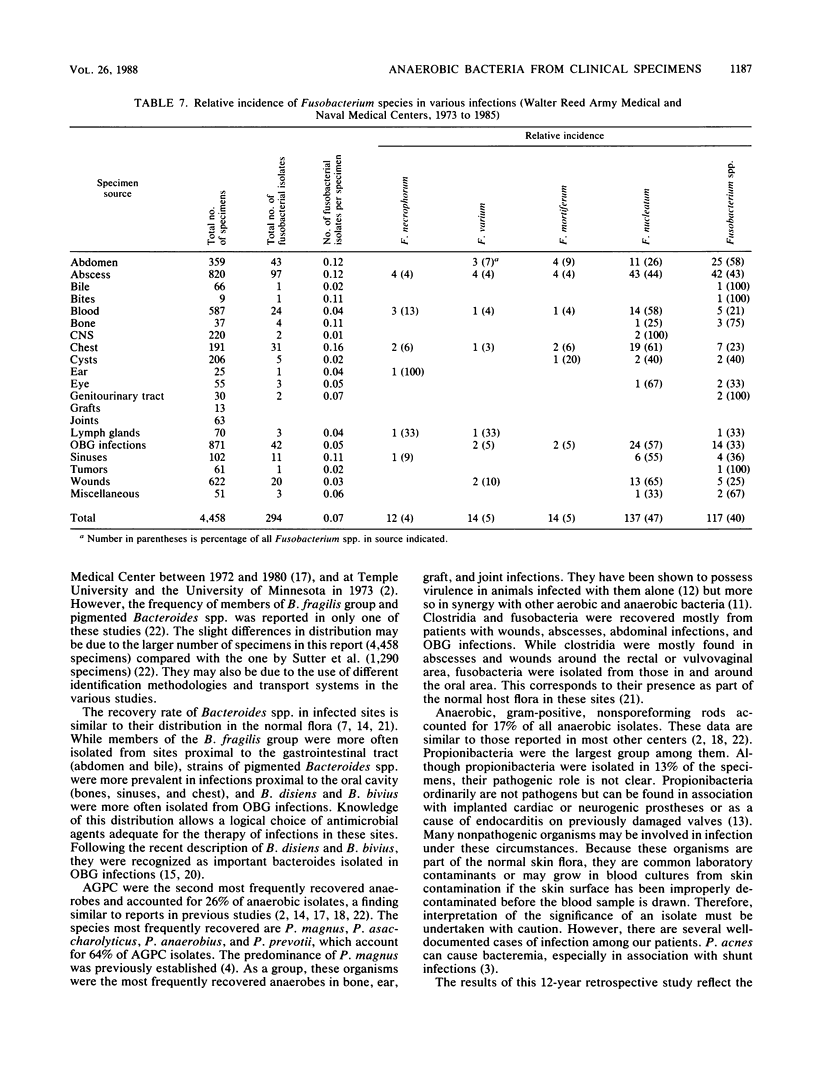
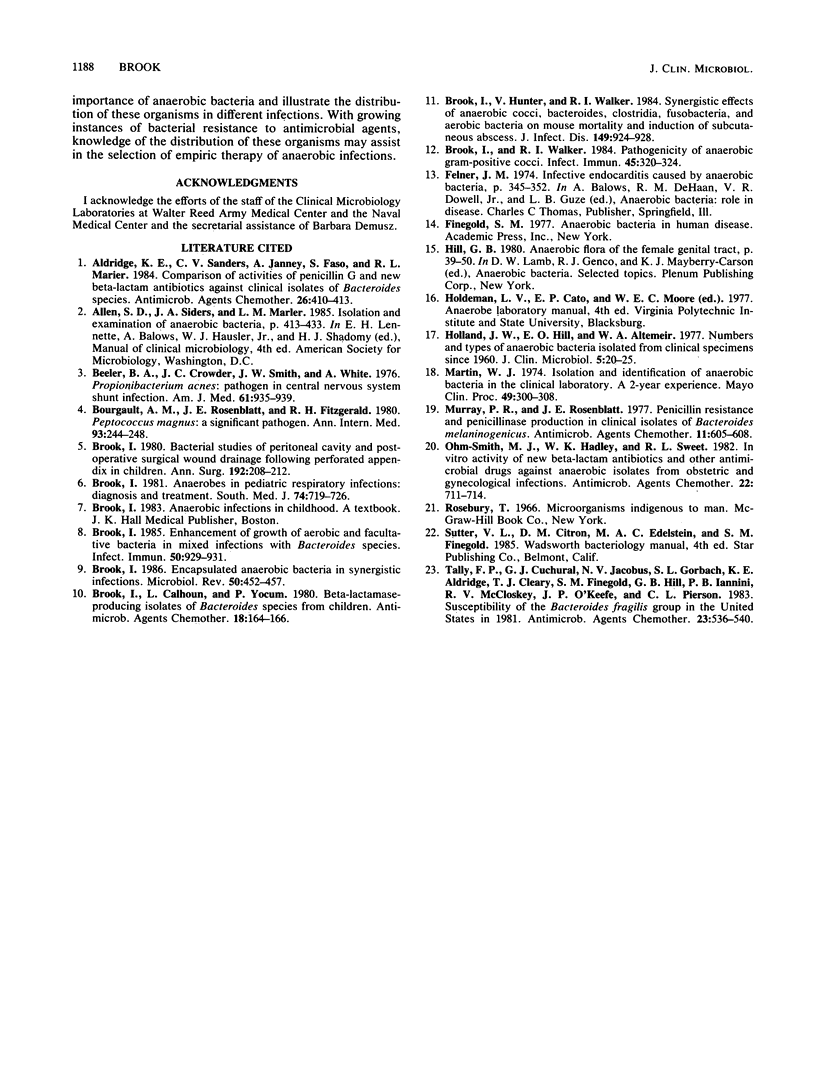
Selected References
These references are in PubMed. This may not be the complete list of references from this article.
- Aldridge K. E., Sanders C. V., Janney A., Faro S., Marier R. L. Comparison of the activities of penicillin G and new beta-lactam antibiotics against clinical isolates of Bacteroides species. Antimicrob Agents Chemother. 1984 Sep;26(3):410–413. doi: 10.1128/aac.26.3.410. [DOI] [PMC free article] [PubMed] [Google Scholar]
- Beeler B. A., Crowder J. G., Smith J. W., White A. Propionibacterium acnes: pathogen in central nervous system shunt infection. Report of three cases including immune complex glomerulonephritis. Am J Med. 1976 Dec;61(6):935–938. doi: 10.1016/0002-9343(76)90418-6. [DOI] [PubMed] [Google Scholar]
- Bourgault A. M., Rosenblatt J. E., Fitzgerald R. H. Peptococcus magnus: a significant human pathogen. Ann Intern Med. 1980 Aug;93(2):244–248. doi: 10.7326/0003-4819-93-2-244. [DOI] [PubMed] [Google Scholar]
- Brook I. Anaerobic bacteria in pediatric respiratory infection: progress in diagnosis and treatment. South Med J. 1981 Jun;74(6):719–726. doi: 10.1097/00007611-198106000-00023. [DOI] [PubMed] [Google Scholar]
- Brook I. Bacterial studies of peritoneal cavity and postoperative surgical wound drainage following perforated appendix in children. Ann Surg. 1980 Aug;192(2):208–212. doi: 10.1097/00000658-198008000-00014. [DOI] [PMC free article] [PubMed] [Google Scholar]
- Brook I., Calhoun L., Yocum P. Beta-lactamase-producing isolates of Bacteroides species from children. Antimicrob Agents Chemother. 1980 Jul;18(1):164–166. doi: 10.1128/aac.18.1.164. [DOI] [PMC free article] [PubMed] [Google Scholar]
- Brook I. Encapsulated anaerobic bacteria in synergistic infections. Microbiol Rev. 1986 Dec;50(4):452–457. doi: 10.1128/mr.50.4.452-457.1986. [DOI] [PMC free article] [PubMed] [Google Scholar]
- Brook I. Enhancement of growth of aerobic and facultative bacteria in mixed infections with Bacteroides species. Infect Immun. 1985 Dec;50(3):929–931. doi: 10.1128/iai.50.3.929-931.1985. [DOI] [PMC free article] [PubMed] [Google Scholar]
- Brook I., Hunter V., Walker R. I. Synergistic effect of bacteroides, Clostridium, Fusobacterium, anaerobic cocci, and aerobic bacteria on mortality and induction of subcutaneous abscesses in mice. J Infect Dis. 1984 Jun;149(6):924–928. doi: 10.1093/infdis/149.6.924. [DOI] [PubMed] [Google Scholar]
- Brook I., Walker R. I. Pathogenicity of anaerobic gram-positive cocci. Infect Immun. 1984 Aug;45(2):320–324. doi: 10.1128/iai.45.2.320-324.1984. [DOI] [PMC free article] [PubMed] [Google Scholar]
- Holland J. W., Hill E. O., Altemeier W. A. Numbers and types of anaerobic bacteria isolated from clinical specimens since 1960. J Clin Microbiol. 1977 Jan;5(1):20–25. doi: 10.1128/jcm.5.1.20-25.1977. [DOI] [PMC free article] [PubMed] [Google Scholar]
- Martin W. J. Isolation and indentification of anaerobic bacteria in the clinical laboratory. A 2-year experience. Mayo Clin Proc. 1974 May;49(5):300–308. [PubMed] [Google Scholar]
- Murray P. R., Rosenblatt J. E. Penicillin resistance and penicillinase production in clinical isolates of Bacteroides melaninogenicus. Antimicrob Agents Chemother. 1977 Apr;11(4):605–608. doi: 10.1128/aac.11.4.605. [DOI] [PMC free article] [PubMed] [Google Scholar]
- Ohm-Smith M. J., Hadley W. K., Sweet R. L. In vitro activity of new beta-lactam antibiotics and other antimicrobial drugs against anaerobic isolates from obstetric and gynecological infections. Antimicrob Agents Chemother. 1982 Oct;22(4):711–714. doi: 10.1128/aac.22.4.711. [DOI] [PMC free article] [PubMed] [Google Scholar]
- Tally F. P., Cuchural G. J., Jacobus N. V., Gorbach S. L., Aldridge K. E., Cleary T. J., Finegold S. M., Hill G. B., Iannini P. B., McCloskey R. V. Susceptibility of the Bacteroides fragilis group in the United States in 1981. Antimicrob Agents Chemother. 1983 Apr;23(4):536–540. doi: 10.1128/aac.23.4.536. [DOI] [PMC free article] [PubMed] [Google Scholar]


